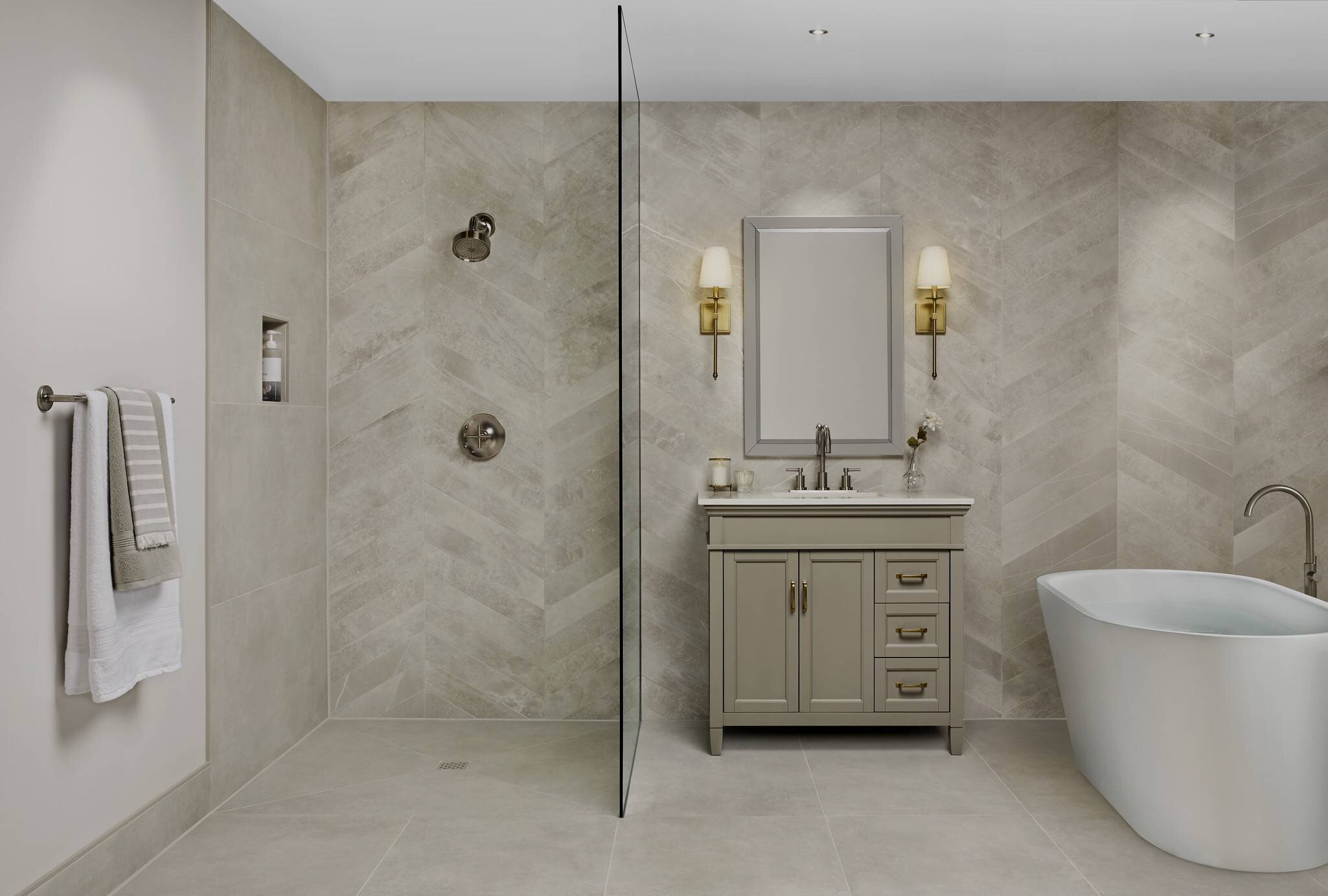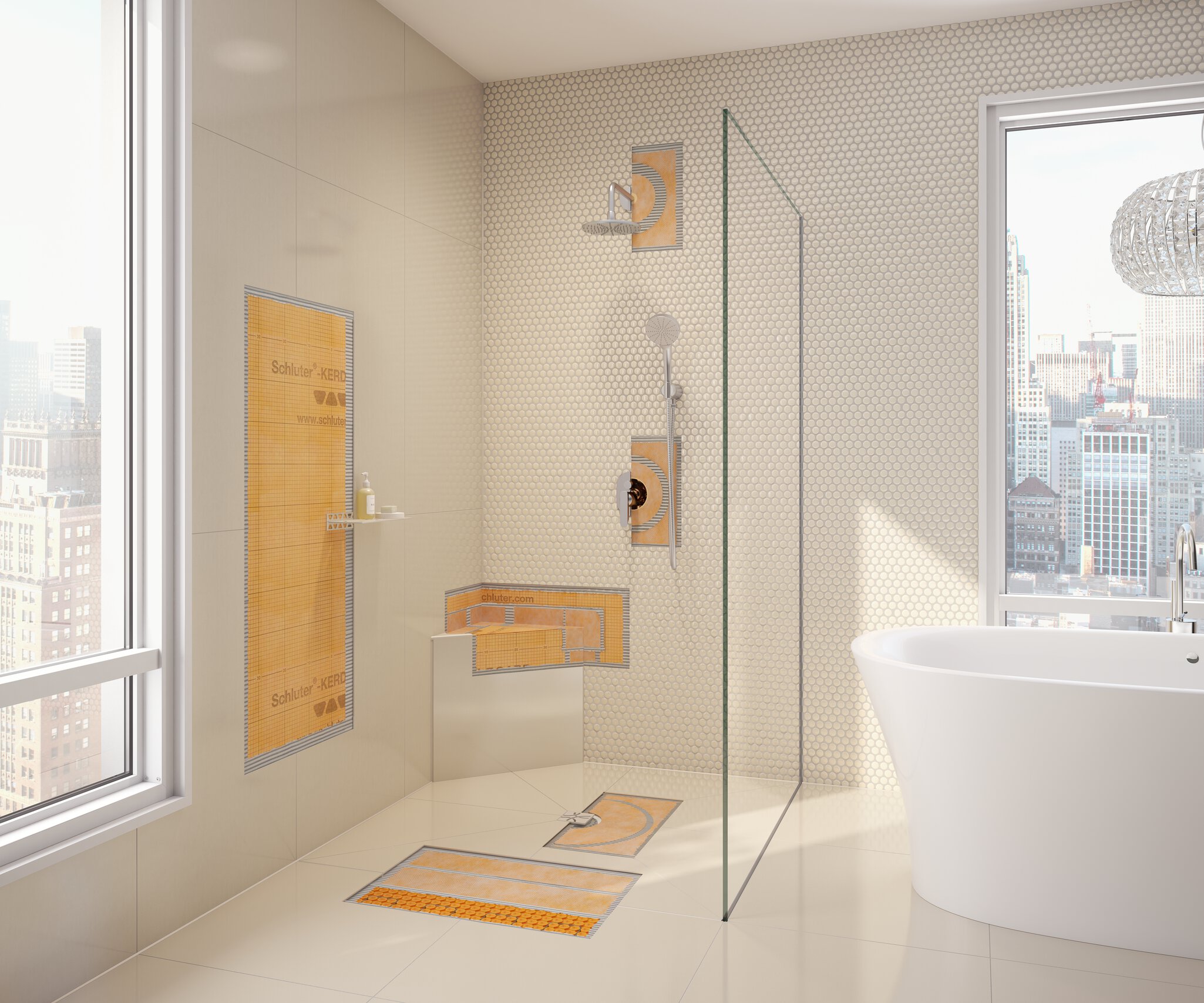Inclusive Spaces: Crafting a Barrier-Free Bathroom for Your Home
A barrier-free bathroom, also known as an accessible or universal design bathroom, is a space that is designed to be easily used and navigated by individuals of all abilities, including those with mobility challenges, disabilities, or aging-related limitations. The goal is to eliminate physical barriers and create an environment that promotes independence, safety, and comfort for everyone. Creating a barrier-free bathroom at home involves incorporating specific design elements and features that enhance accessibility.



When incorporating universal design principles, a bathroom in a barrier-free home often complies with numerous ADA (Americans with Disabilities Act) guidelines. While there is overlap between the concepts of a barrier-free bathroom and ADA compliance, they are not synonymous. The ADA establishes specific requirements for accessible design in public accommodations, including bathrooms, covering aspects like clear floor space, fixture height, grab bar placement, and door clearances. In a home setting, ADA compliance may not be legally mandatory, but incorporating ADA guidelines or universal design principles can significantly enhance accessibility and usability for individuals with disabilities or mobility challenges. This approach fosters inclusivity and comfort within the home environment, making it a welcoming space for everyone. If aiming for ADA compliance in a residential bathroom, consulting the ADA guidelines provides a comprehensive understanding of the necessary features and dimensions.
In the world of accessible bathrooms, it's not just about meeting the basics—it’s about seamlessly blending design and functionality. When we talk about aging in place, envisioning a bathroom that not only caters to specific needs but also looks aesthetically pleasing becomes crucial. When crafting a bathroom for aging in place, decisions made today should resonate with the future, ensuring that the design not only meets immediate accessibility needs but also stands the test of time.
Here are some key considerations to building a residential barrier-free bathroom:
Universal Design Principles:
Universal design emphasizes creating spaces that are usable by people of all abilities without the need for adaptation. Consider incorporating features such as zero-threshold entries, wider doorways, and open floor spaces to accommodate mobility aids.
Ample Clear Floor Space:
Begin by ensuring there is sufficient clear floor space, allowing for easy navigation and maneuverability. This is particularly crucial for individuals using wheelchairs or other mobility aids.
Wider Doorways:
Install wider doorways (at least 32 inches wide) to facilitate easy entry and exit. This simple modification can significantly enhance accessibility for wheelchair users.
Accessible Fixtures:
Choose fixtures with universal design features, including comfort-height toilets, sinks with open knee spaces, and faucets with easy-to-operate handles. Ensure the height and placement of fixtures are adaptable to different users.
Grab Bars for Stability:
Incorporate strategically placed grab bars in key areas such as near the toilet , shower, and bathtub. These bars provide stability and support, enhancing safety for all users.
Non-Slip Flooring:
Opt for non-slip flooring materials in wet areas like the shower to prevent accidents. Textured tiles or non-slip coatings can offer both functionality and aesthetics.
Roll-In Shower:
Consider a roll-in shower with minimal or no curb for easy wheelchair access. Install a handheld showerhead and controls within reach for added convenience.
Accessible Sink and Vanity:
Choose a sink with an open space beneath to accommodate wheelchair users. Opt for lever-style faucet handles for easy operation.
Proper Lighting:
Ensure well-distributed and ample lighting throughout the bathroom, with specific attention to task lighting in areas like the sink and shower.
Contrasting Colors:
Use contrasting colors for different surfaces and elements to enhance visibility for individuals with visual impairments.
User-Friendly Faucets:
Select faucets with easy-to-use handles or touch-sensitive controls. Ensuring that controls are reachable from a seated position is especially important.
Adjustable Features:
Incorporate adjustable elements such as handheld mirrors, flexible shelving, and customizable storage options to cater to varying needs.
Barrier-free Bathrooms and Schluter®-Systems
Schluter offers a range of products that can transform your vision of a barrier-free bathroom into reality with products and systems that will help you create a bathroom that is functional, accessible, waterproof, and appealing.



A Shower Space for All Abilities
One of the most important barrier-free components in a bathroom is an accessible shower. Removing the shower curb and eliminating raised thresholds provides a smooth and even surface for easy wheelchair maneuverability and opens design possibilities, especially when it comes to tile selection. Large-format tile can be extended from the bathroom floor into the shower!
Schluter offers shower trays in a range of shapes and sizes, for both point drains and linear drains. All Schluter shower trays meet the slope ratio required for ADA compliance, making it easy to create curbless showers. There are two ways you can create ADA-compliant, curbless showers with Schluter®-Systems:
1. By recessing the shower floor, you can make the Schluter prefabricated shower tray flush with the bathroom floor. Learn all about this most popular option here.
2. You can also use a prefabricated shower tray in conjunction with the Schluter®-KERDI-SHOWER-R shower ramp. Click here for more.






Waterproofing for Barrier-Free Showers
With the absence of a curb in a barrier-free bathroom, the lineation between wet and dry areas may become blurry. Bonded waterproof membranes, both inside and outside the shower enclosure, are necessary for durability and moisture management. Schluter offers a complete line of products with options that integrate to form a fully bonded, watertight assembly for tiled curbless showers.
Schluter®-KERDI products include waterproofing membranes for shower walls and bases, as well as specialty pieces for all the hard-to-protect areas, such as pipe protrusions, and inside and outside corners. With KERDI, you can treat all the areas of your bathroom and ensure the entire room is waterproof.



Protect Tiles from Cracking
The use of uncoupling membranes like the Schluter®-DITRA is crucial for protecting tile surfaces from cracking. Uncoupling isolates movements in substrates caused by loading, temperature, and humidity changes. DITRA, when its seams are covered with KERDI-BAND also provides waterproof protection.
Secondary Drainage
Sometimes, water can make its way out of the designated shower area—especially when walls or dividers are removed. The Schluter®-KERDI-DRAIN-F floor drain specifically designed for use in tiled floors in conjunction with Schluter®-DITRA and DITRA-HEAT membranes to provide reliable drainage.
The Path to Inclusive Living
Building a barrier-free home bathroom is a rewarding endeavor that transforms a functional space into an inclusive haven. By embracing universal design principles and thoughtful modifications, you can create a bathroom that accommodates the needs of every member of the household, fostering independence and comfort. Whether you're accommodating a family member with mobility challenges or planning for future accessibility, investing in a barrier-free bathroom is an investment in the well-being of your home and its occupants.